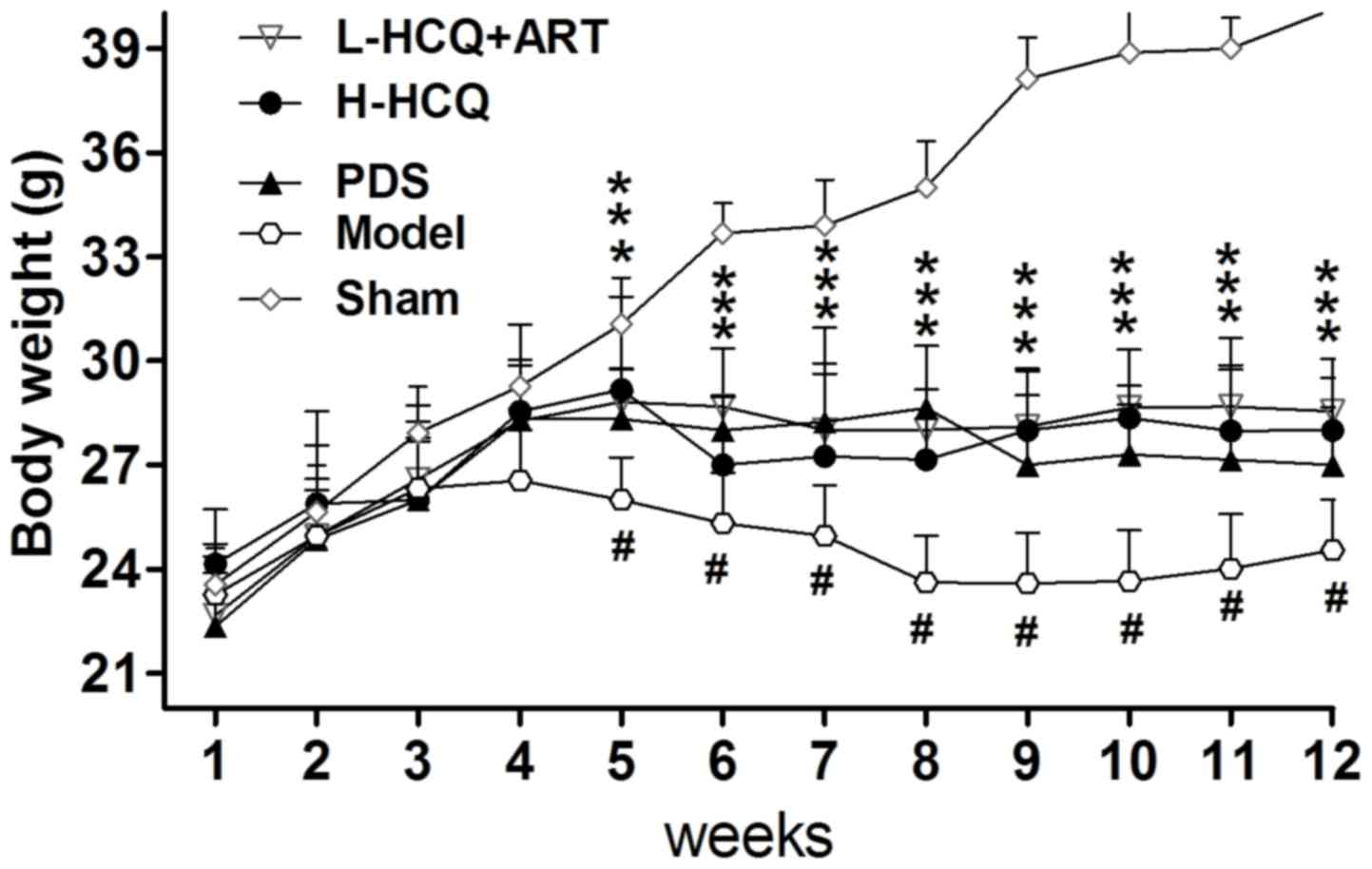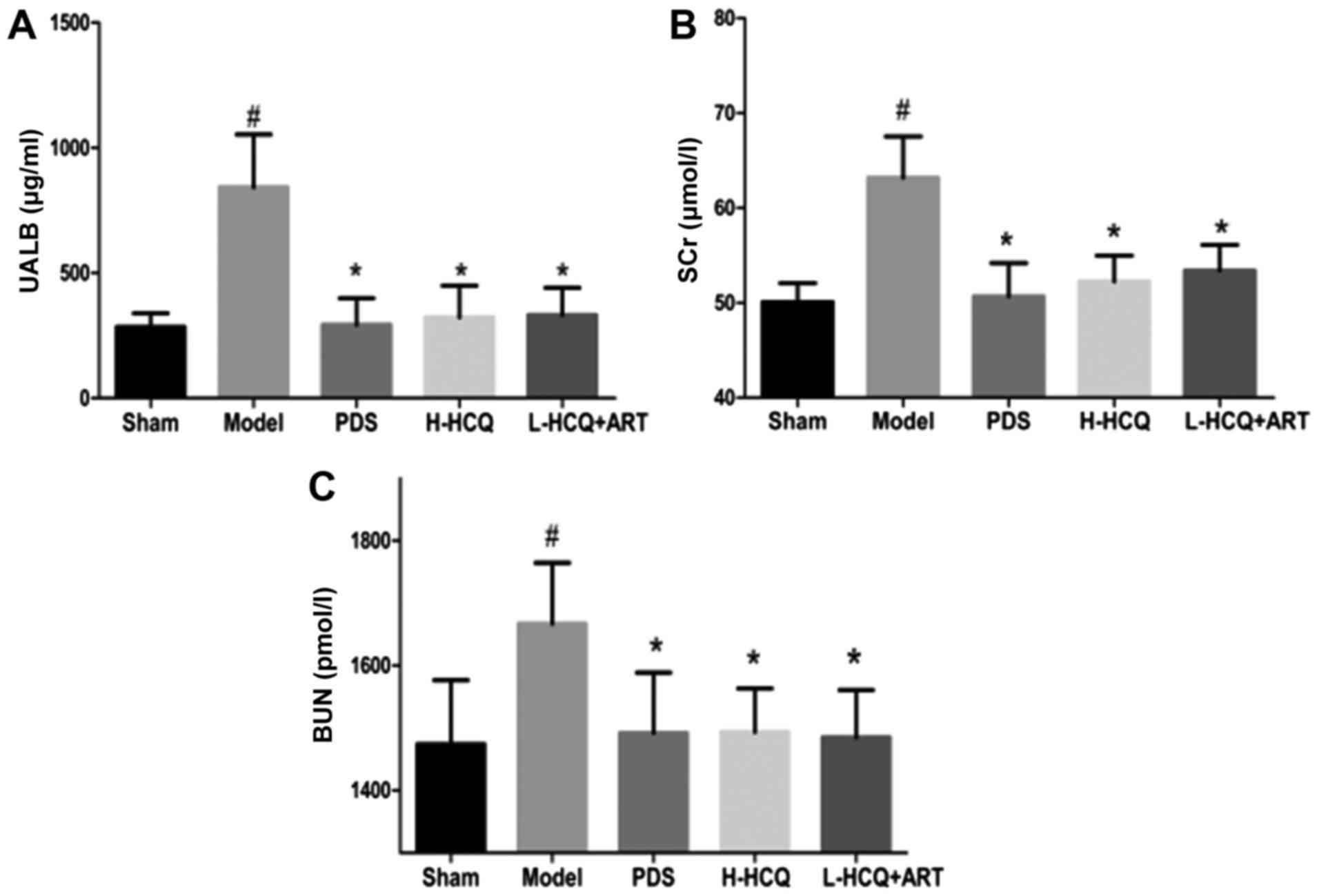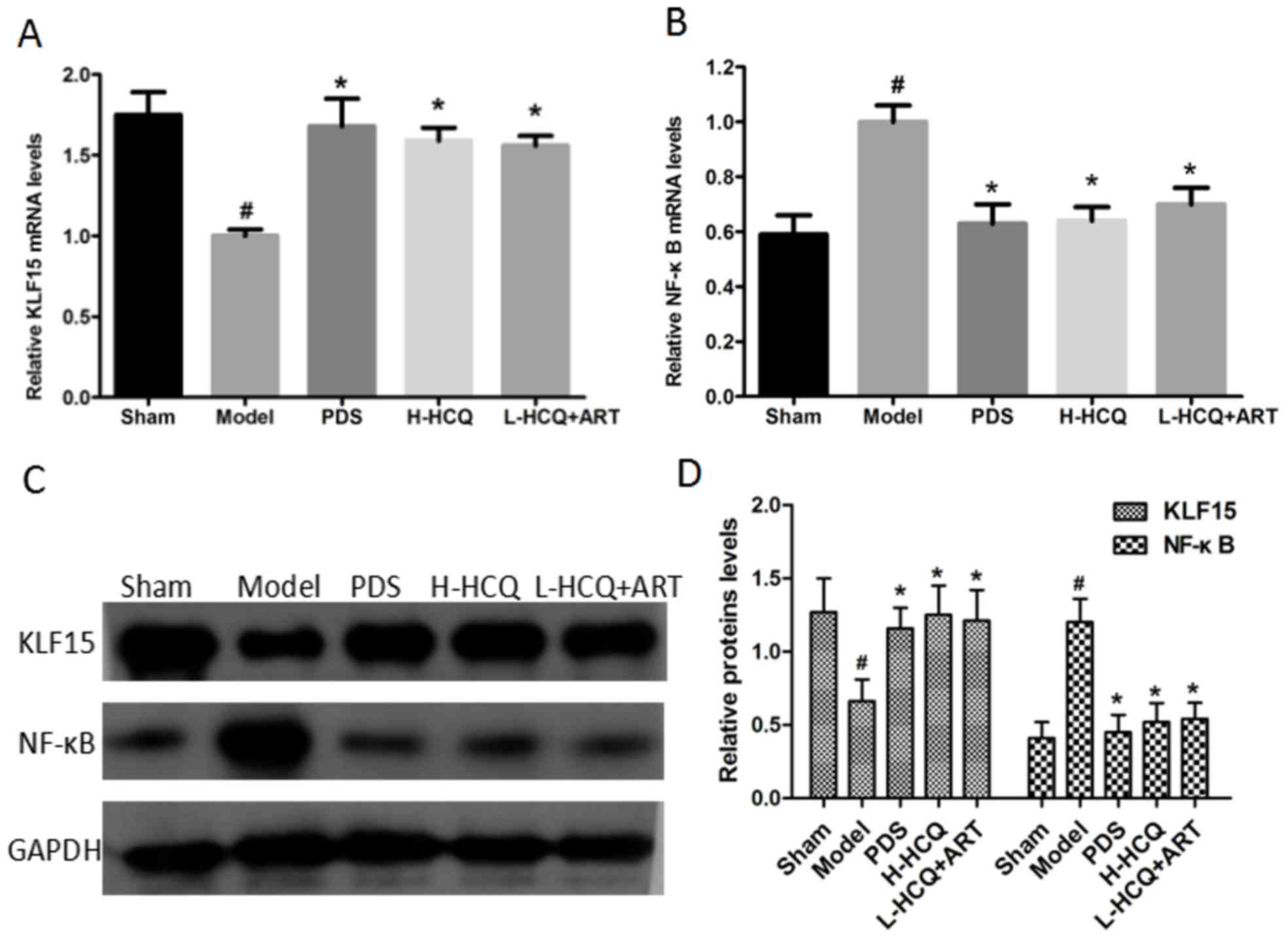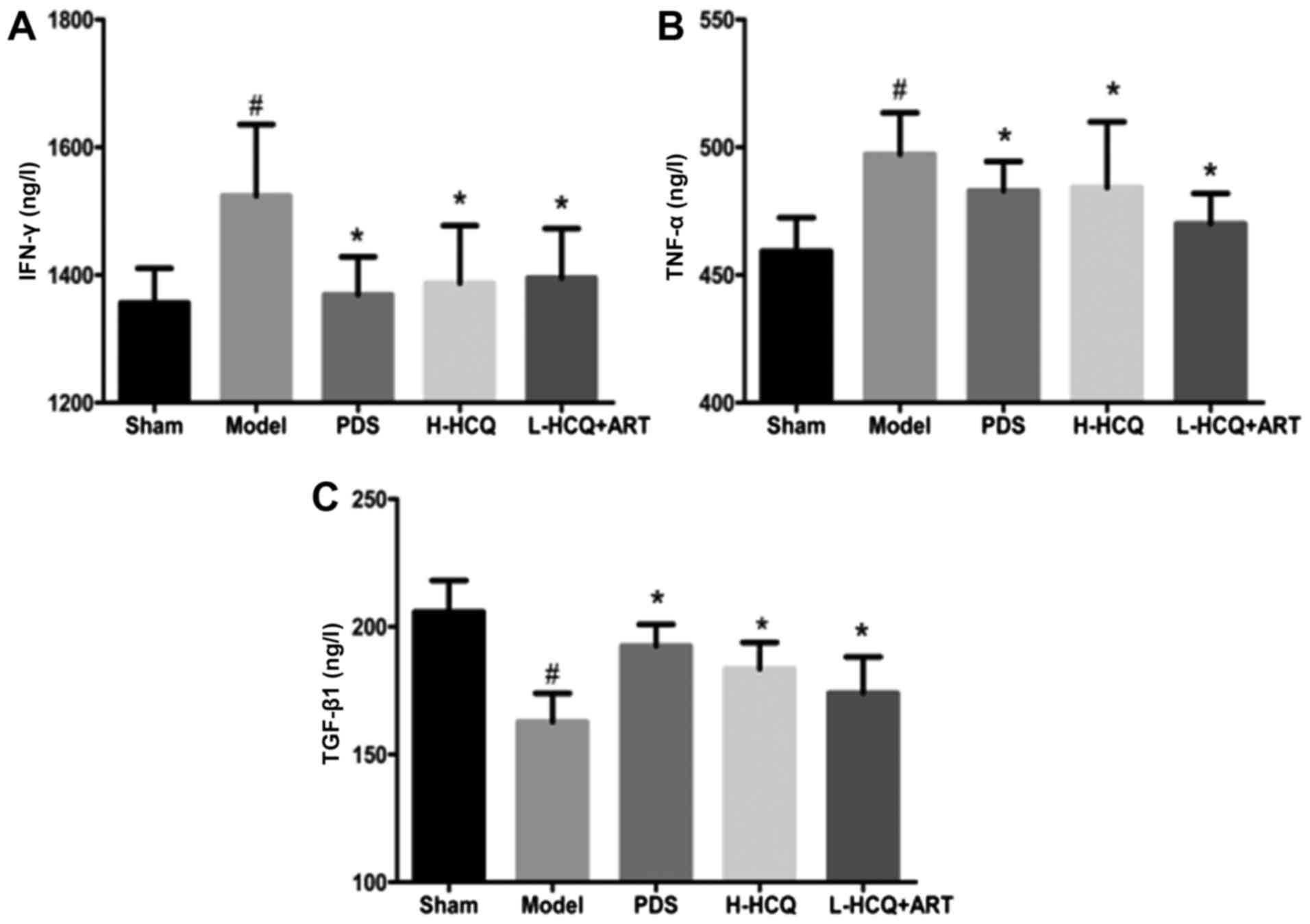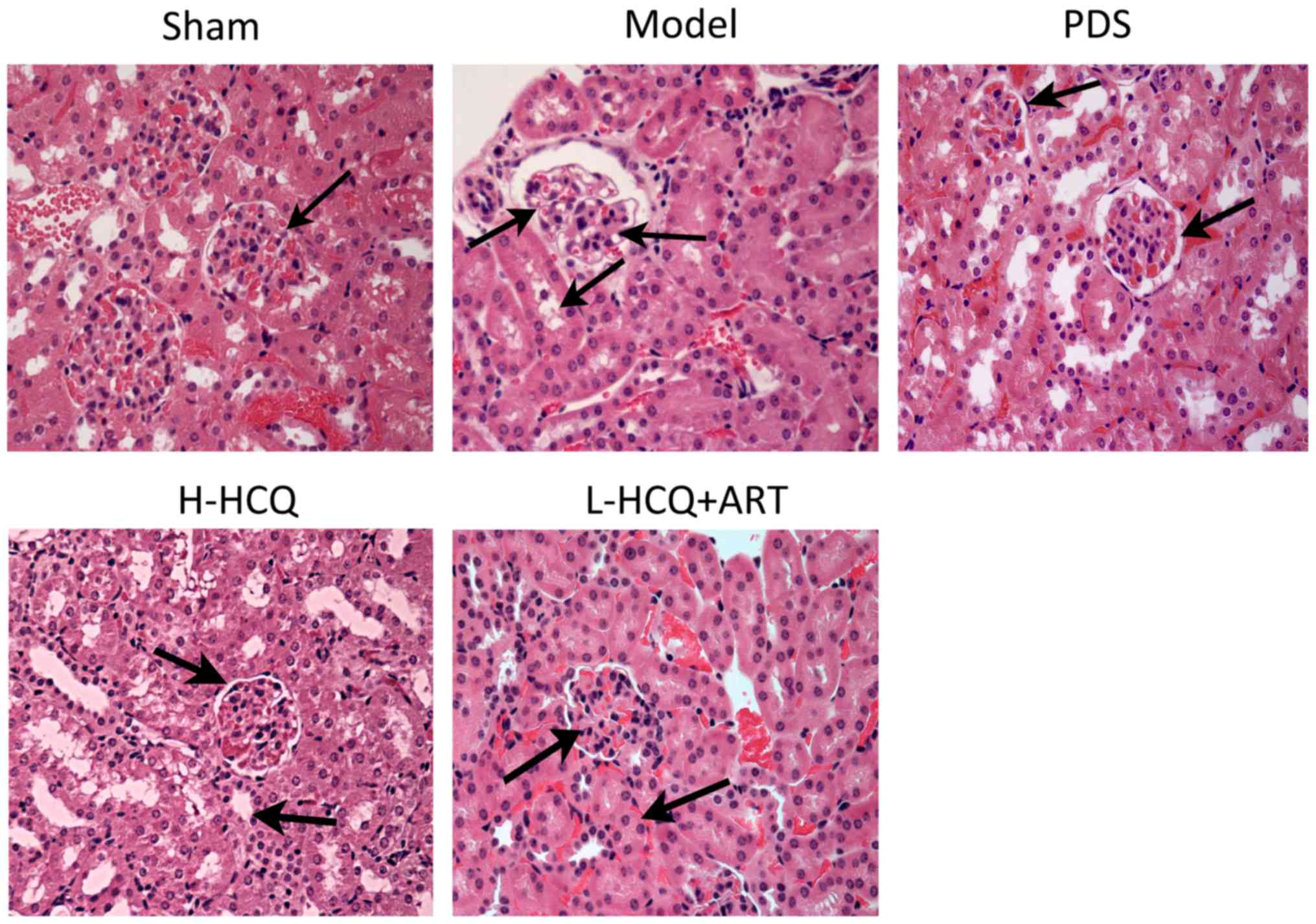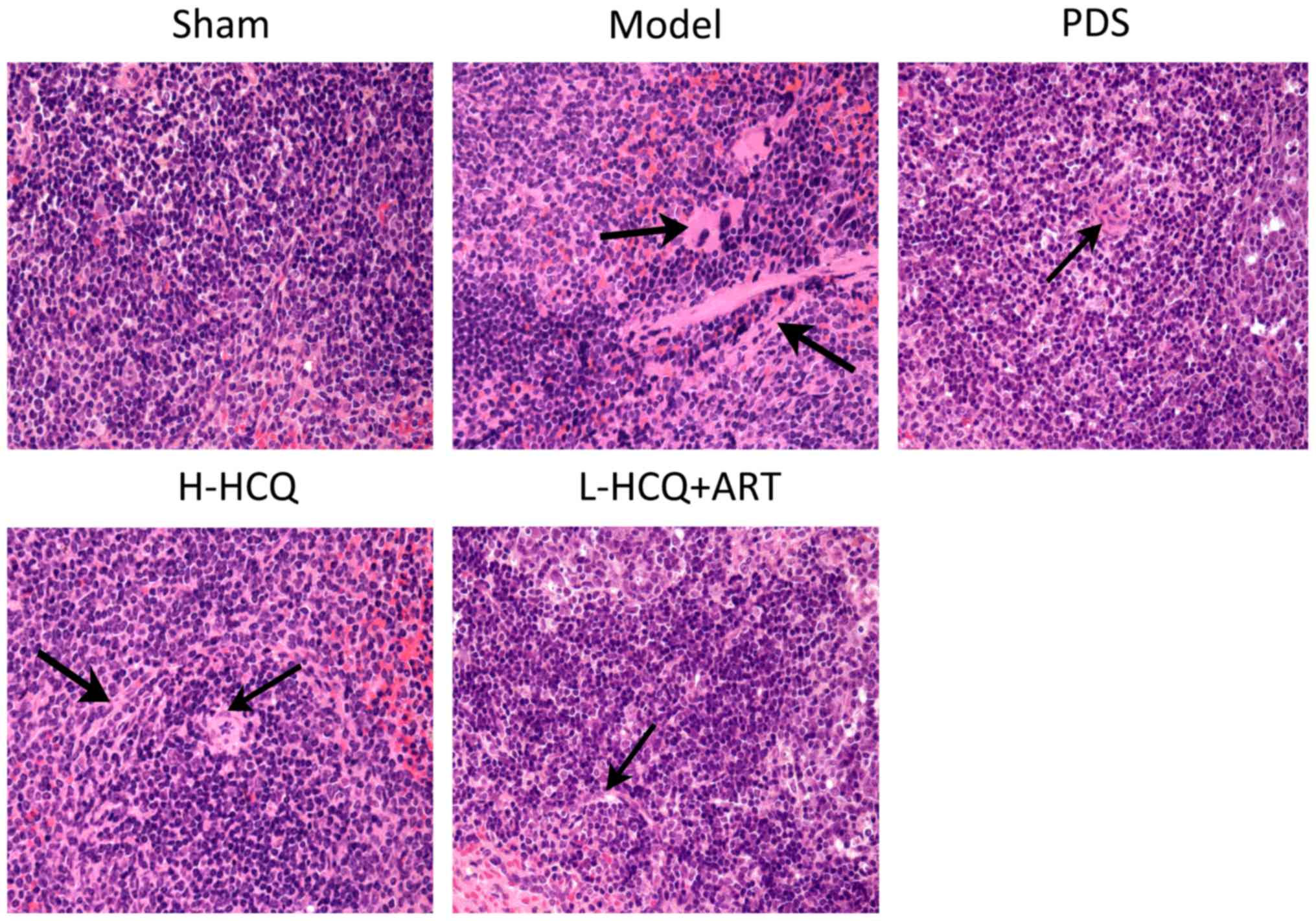|
1
|
Bhatt D and Ghosh S: Regulation of the
NF-κB-mediated transcription of inflammatory genes. Front Immuno.
5:712014. View Article : Google Scholar
|
|
2
|
Appel GB, Contreras G, Dooley MA, Ginzler
EM, Isenberg D, Jayne D, Li LS, Mysler E, Sánchez-Guerrero J,
Solomons N, et al: Mycophenolate mofetil versus cyclophosphamide
for induction treatment of lupus nephritis. J Am Soc Nephrol.
20:1103–1112. 2009. View Article : Google Scholar : PubMed/NCBI
|
|
3
|
Ruiz-Irastorza G, Danza A, Perales I,
Villar I, Garcia M, Delgado S and Khamashta M: Prednisone in lupus
nephritis: How much is enough? Autoimmun Rev. 13:206–214. 2014.
View Article : Google Scholar : PubMed/NCBI
|
|
4
|
Illei GG, Austin HA, Crane M, Collins L,
Gourley MF, Yarboro CH, Vaughan EM, Kuroiwa T, Danning CL, et al:
Combination therapy with pulse cyclophosphamide plus pulse
methylprednisolone improves long-term renal outcome without adding
toxicity in patients with lupus nephritis. Ann Intern Med.
135:248–257. 2001. View Article : Google Scholar : PubMed/NCBI
|
|
5
|
Kawasaki H, Onuki R, Suyama E and Taira K:
Identification of genes that function in the TNF-alpha-mediated
apoptotic pathway using randomized hybrid ribozyme libraries. Nat
Biotechnol. 20:376–380. 2002. View Article : Google Scholar : PubMed/NCBI
|
|
6
|
Zheng ZH, Zhang LJ, Liu WX, Lei YS, Xing
GL, Zhang JJ, Quan SX, Liu D, Hu DS, Li LL and Liu ZS: Predictors
of survival in Chinese patients with lupus nephritis. Lupus.
21:1049–1056. 2012. View Article : Google Scholar : PubMed/NCBI
|
|
7
|
Pons-Estel GJ, Alarcón GS, McGwin G Jr,
Danila MI, Zhang J, Bastian HM, Reveille JD and Vilá LM; Lumina
Study Group, : Protective effect of hydroxychloroquine on renal
damage in patients with lupus nephritis: LXV, data from a
multiethnic US cohort. Arthritis Rheum. 61:830–839. 2009.
View Article : Google Scholar : PubMed/NCBI
|
|
8
|
Lee SJ, Silverman E and Bargman JM: The
role of antimalarial agents in the treatment of SLE and lupus
nephritis. Nat Rev Nephrol. 7:718–729. 2011. View Article : Google Scholar : PubMed/NCBI
|
|
9
|
Wallace DJ, Gudsoorkar VS, Weisman MH and
Venuturupalli SR: New insights into mechanisms of therapeutic
effects of antimalarial agents in SLE. Nat Rev Rheumatol.
8:522–533. 2012. View Article : Google Scholar : PubMed/NCBI
|
|
10
|
Costedoat-Chalumeau N, Dunogué B, Leroux
G, Morel N, Jallouli M, Le Guern V, Piette JC, Brézin AP, Melles RB
and Marmor MF: A critical review of the effects of
hydroxychloroquine and chloroquine on the eye. Clin Rev Allergy
Immunol. 49:317–326. 2015. View Article : Google Scholar : PubMed/NCBI
|
|
11
|
Bhavsar KV, Mukkamala LK and Freund KB:
Multimodal imaging in a severe case of hydroxychloroquine toxicity.
Ophthalmic Surg Lasers Imaging Retina. 46:377–379. 2015. View Article : Google Scholar : PubMed/NCBI
|
|
12
|
Ding HJ, Denniston AK, Rao VK and Gordon
C: Hydroxychloroquine-related retinal toxicity. Rheumatology
(Oxford). 55:957–967. 2016. View Article : Google Scholar : PubMed/NCBI
|
|
13
|
Abdel Galil SM: Hydroxychloroquine-induced
toxic hepatitis in a patient with systemic lupus erythematosus: A
case report. Lupus. 24:638–640. 2015. View Article : Google Scholar : PubMed/NCBI
|
|
14
|
Wu Y, He S, Bai B, Zhang L, Xue L, Lin Z,
Yang X, Zhu F, He P, Tang W and Zuo J: Therapeutic effects of the
artemisinin analog SM934 on lupus-prone MRL/lpr mice via inhibition
of TLR-triggered B-cell activation and plasma cell formation. Cell
Mol Immunol. 13:379–390. 2016. View Article : Google Scholar : PubMed/NCBI
|
|
15
|
Wu XL, Zhang WG, Shi XM, An P, Sun WS,
Qiao CL and Wang Z: Effect of artemisinin combined with
glucocorticoid on the expressions of glucocorticoid receptor α
mRNA, glucocorticoid receptor β mRNA and P300/CBP protein in lupus
nephritis mice. Chin J Integr Med. 17:277–282. 2011. View Article : Google Scholar : PubMed/NCBI
|
|
16
|
The People's Republic of China of
Laboratory Animals-Guideline of welfare and ethics. Standardization
Administration of China. 2016.
|
|
17
|
Wen ZK, Xu W, Xu L, Cao QH, Wang Y, Chu YW
and Xiong SD: DNA hypomethylation is crucial for apoptotic DNA to
induce systemic lupus erythematosus-like autoimmune disease in
SLE-non-susceptible mice. Rheumatology (Oxford). 46:1796–1803.
2007. View Article : Google Scholar : PubMed/NCBI
|
|
18
|
Livak KJ and Schmittgen TD: Analysis of
relative gene expression data using real-time quantitative PCR and
the 2(-Delta Delta C(T)) method. Methods. 25:402–408. 2001.
View Article : Google Scholar : PubMed/NCBI
|
|
19
|
Shaharir SS, Ghafor AA, Said MM and Kong
NC: A descriptive study of the factors associated with damage in
Malaysian patients with lupus nephritis. Lupus. 23:436–442. 2014.
View Article : Google Scholar : PubMed/NCBI
|
|
20
|
Zhang ZM, Zhao L, Zhang XL and Wang XF:
Correlation analysis between urinary T lymphocyte subsets and lupus
nephritis disease activity. Int J Clin Exp Med. 10:6061–6070.
2017.
|
|
21
|
Bertsias GK, Tektonidou M, Amoura Z,
Aringer M, Bajema I, Berden JH, Boletis J, Cervera R, Dörner T,
Doria A, et al: Joint European league against rheumatism and
European renal association-European dialysis and transplant
association (EULAR/ERA-EDTA) recommendations for the management of
adult and paediatric lupus nephritis. Ann Rheum Dis. 71:1771–1782.
2012. View Article : Google Scholar : PubMed/NCBI
|
|
22
|
Imran TF, Yick F, Verma S, Estiverne C,
Ogbonnaya-Odor C, Thiruvarudsothy S, Reddi AS and Kothari N: Lupus
nephritis: An update. Clin Exp Nephrol. 20:1–13. 2016. View Article : Google Scholar : PubMed/NCBI
|
|
23
|
Tucci M, Stucci S, Strippoli S and
Silvestris F: Cytokine overproduction, T-cell activation and
defective T-regulatory functions promote nephritis in systemic
lupus erythematosus. Bio Med Res Int. 2010:4571462010.
|
|
24
|
Deshmukh US, Bagavant H and Fu SM: Role of
anti-DNA antibodies in the pathogenesis of lupus nephritis.
Autoimmun Rev. 5:414–418. 2006. View Article : Google Scholar : PubMed/NCBI
|
|
25
|
Mallipattu SK, Liu R, Zheng F, Narla G,
Ma'ayan A, Dikman S, Jain MK, Saleem M, D'Agati V, Klotman P, et
al: Kruppel-like factor 15 (KLF15) is a key regulator of podocyte
differentiation. J Biol Chem. 287:19122–19135. 2012. View Article : Google Scholar : PubMed/NCBI
|
|
26
|
Hong Q, Li C, Xie Y, Lv Y, Liu X, Shi S,
Ding R, Zhang X, Zhang L, Liu S and Chen X: Kruppel-like factor-15
inhibits the proliferation of mesangial cells. Cell Physiol
Biochem. 29:893–904. 2012. View Article : Google Scholar : PubMed/NCBI
|
|
27
|
Lu Y, Zhang L, Liao X, Sangwung P,
Prosdocimo DA, Zhou G, Votruba AR, Brian L, Han YJ, Gao H, et al:
Kruppel-like factor 15 is critical for vascular inflammation. J
Clini Invest. 123:4232–4241. 2013. View
Article : Google Scholar
|
|
28
|
Jain MK, Sangwung P and Hamik A:
Regulation of an inflammatory disease. Arterioscler Thromb Vasc
Biol. 34:499–508. 2014. View Article : Google Scholar : PubMed/NCBI
|
|
29
|
Yazici MU, Orhan D, Kale G, Besbas N and
Ozen S: Studying IFN-gamma, IL-17 and FOXP3 in pediatric lupus
nephritis. Pediatr Nephrol. 29:853–862. 2014. View Article : Google Scholar : PubMed/NCBI
|
|
30
|
Davidson A: What is damaging the kidney in
lupus nephritis? Nat Rev Rheumatol. 12:143–153. 2016. View Article : Google Scholar : PubMed/NCBI
|
|
31
|
Yang L, Sun X, Zhan Y, Liu H, Wen Y, Mao
H, Dong XI and Li P: Yi Qi Qing Re Gao-containing serum inhibits
lipopolysaccharide-induced rat mesangial cell proliferation by
suppressing the Wnt pathway and TGF-β1 expression. Exp Ther Med.
11:1410–1416. 2016. View Article : Google Scholar : PubMed/NCBI
|















